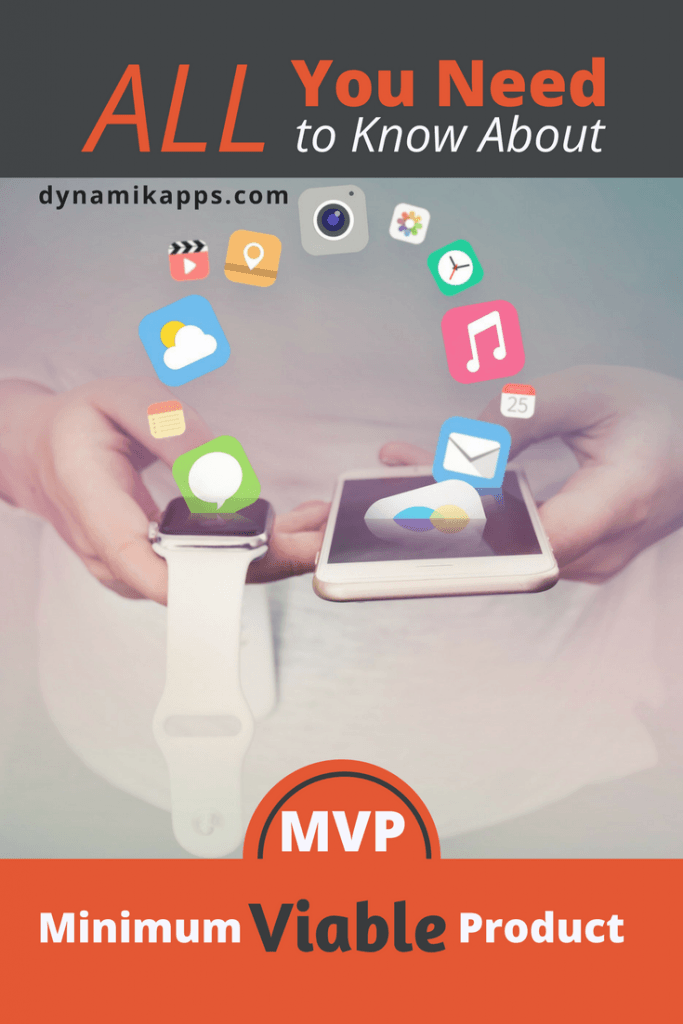Do you know how to find your Minimum Viable Product (MVP)?
Since the entry of smartphones, there has been a significant shift in the way human beings access information.
Thanks to fast-paced technological advancement, the usefulness of phones has gone far beyond just calling, texting, and playing games.
Now, it almost seems like there is no limit to what our smartphones can do. From making video calls to identifying songs to scanning documents, shopping online, and even learning a new language, these technologies put a host of information directly in our hands.
With the integration of personal digital assistants on mobile platforms, (Apple’s Siri, Microsoft’s Cortana and Amazon’s Alexa and Google’s Google personal assistant), smartphones have become the primary access point of internet usage.

The expansion of the mobile phone market is directly responsible for the increase in the demand for mobile applications. Mobile applications, popularly referred to “apps,” are application software developed for handheld devices (i.e., smartphones, tablets and other mobile devices).
According to research, Facebook, one of the top mobile messaging networks in the world has about 1.3 billion users who access the social network only via the mobile app. Essentially, most users would rather access mobile properties via the mobile app than the mobile browser.
There are several categories of mobile apps including tools, social network, communication, photo, games, etc. There are about 3.5 million mobile apps available in Google Play Store, the top app store in the world available to Android devices. Also, there are about 2.2 million mobile apps available in the Apple App Store for iOS (iPhone/iPad) users.
It is projected that by the year 2020, mobile apps will be generating almost $190 billion in yearly revenue.
Mobile applications are taking over the smartphone world. A time will come where businesses will have to develop mobile apps for their customers to provide better services.
There are a lot of things a developer must consider while developing an app. Some of such considerations is the businesses’ efficiency and increased productivity, as well as the clients’ satisfaction while using the app.
A factor that help developers optimize the features of a mobile application is known as Minimum Viable Product (MVP). This article will give an in-depth review of Minimum Viable Product and its relevance in developing mobile applications.
What is Minimum Viable Product?
In 2011, Eric Ries, a business start-up consultant published a book titled ‘The Lean Startup.’ The book documented Ries’ experience in building start-ups and popularized an approach to product development. This approach centered on building the products by removing excess features to keep things simple. Ries called this concept the Minimum Viable Product.
So what is MVP?
In the context of mobile applications, a minimum viable product is a development technique in which a new product/application is developed with just the basic features to get the interest of consumers and satisfy them as well.
This version is used to collect validated information on the consumer’s needs and preferences concerning the mobile app to build a better and more advanced version. In other words, a minimum viable product is the first version of a new product, like a beta version, which allows developers and the team behind the product gauge and assesses the consumer’s response to the product.
The MVP also allows the team to learn its strengths and weaknesses, the features consumers want to see, the least used features on the app, etc. The final and full-fledged application with the complete set of features is only designed and developed after considering feedback from the product’s initial users.
Why is Minimum Viable Product important?

Creating a minimum viable product before releasing the final version of the app with a bulk of features is a better and more efficient approach to app development. Below are some of the reasons that prove this point.
Faster market entry
There are hundreds of thousands of apps in the world, and there is a great possibility that an app that solves a similar problem to the one you intend to develop already exist or is still in development. As MVPs require little effort and thus time, adopting this model will help launch the product in the market faster beating out potential competitors and giving the developer a possible edge over others.
Also, with faster entry into the market, will give the app ample time to gain popularity before the release of the upgraded and enhanced version.
Test run the app in the market
Building a minimum viable product helps test the application in the market. By releasing the basic version first, the developers can track the progress of the app in the market and assess the success rate of the app based on consumer feedback. Before an app is released, every form of testing and experimentation is internal, and nothing compares to the launching of the app in the real market.
The real market is controlled by a variety of factors beyond the developer’s control, and the best way to analyze the performance of an app and the level of interest from customers is to test it in an uncontrolled environment.
Minimize development cost
More features and components in apps mean more funds to finance the project. Since an MVP is the simplest version of a product, it is void of all the extra and probably unnecessary components. The less complicated the app, the lesser the resources required to develop it. So, if you can minimize your development cost and still release an app with just the basic and core features that provide a solution to clients need, why not?
Save time and effort
The idea behind developing an MVP is that it takes up as little amount of time and efforts as possible. The feedback from users on the first version will help developers better channel their energy, time, and resources to tailor an app that reflects the requirements of the clients to create a more engaging and user suitable mobile application.
Attract investors
An MVP cam act like a demo presentation to potential investors who may be interested in investing in an app. By putting out the core features, the developer presents the essence of the app with the promise of an upgrade to the investor. If the MVP sustains the interest of an investor, then the full-fledged app will pretty much overwhelm and impress the investors.
How to create Minimum Viable Product
The MVP is the minimum, meaning the mobile app development process should involve as little time and effort to create it as possible. However, this does not mean releasing an inoperable application, just enough features to accelerate validated learning. Outlined is a five-step process of creating an MVP.

Step 1: Identify and understand the problem the mobile application will solve and the target market that will benefit from this.
- Why is this app needed?
- What problems will it solve?
- Who will this app be of use to?
Step 2: Analyze and evaluate your competitors un the market.
- Are there other similar apps on the market?
- How are their apps faring in the market?
- What can be learned from their mistakes and what challenges did the apps scale through?
Step 3: Define the user flow
- What is the main goal of this app?
- How will customers utilize this application?
- What is the simplest flow pattern that connects the problem this app is intended to solve the solution it presents?
Step 4: Outline, evaluate and prioritize all the necessary features of the app
- What is the one most important thing all customers utilizing the mobile app must accomplish?
- What are the most basic features that can see the accomplishment of that task?
- At this point you can arrange the features based on their order of priority; from the most important and necessary to additional features that the app can still function perfectly without.
- Remember it is called MINIMUM, the least practicable number of features to run the app.
Step 5: Build, test and learn
- Create and develop the application and ensure that it is ready for the alpha and beta testing.
- Alpha testing is usually done within a controlled group of people. Usually, friends and family before the app is officially launched in the market to a wider client base. The alpha testing phase is not always necessary and can be skipped altogether.
- Analyze the feedback from the early adopters of the beta version and consider implementing the necessary changes in the next feature.
It is pertinent to note that application can go through as many upgrades as necessary, developers do not have to implement all the required features of an app in the version following a beta release. The idea is to gradually trickle out the features and add-ons in a way that it doesn’t overwhelm the users or affect the performance of the application.
A perfect example of an application that utilized the MVP development technique is WhatsApp. The messaging app started out as a simple online chat platform to connect users with their contacts. New features were gradually introduced, and now, WhatsApp has a bunch of features from voice notes to video calls, to WhatsApp stories, etc. Today, WhatsApp is the top mobile messaging app in the world with about 1.5 billion active monthly users.
How to determine Minimum Viable Product
A minimum viable product is not an excuse to build a bad product; an MVP should deliver the very essence of a mobile application in its most basic form.
Here is a three-step guide on how to determine a minimum viable product.
- Start out with the most basic version of the mobile application that addresses a small part of a problem.
- Emphasize on the bigger picture while constantly upgrading the existing version of the app.
- Release and reiterate.
Another example of a company that utilized the MVP methodology in its approach to mobile app creation is the famous taxi service company called Uber.
In 2010, Uber launched the first and beta version of the Uber app with the goal of connecting taxi drivers to iPhone owners to enable payment for taxi services via credit cards. Now, the ride-sharing app has incorporated fare-splitting feature, gamification elements, destination filter, multiple destinations and other innovative features that were lacking in the initial release.
As at December 2017, Uber’s valuation was set at $68 billion with over 40 million monthly riders; the most valuable startup in the US. Imagine if Garret Camp and Travis Kalanick had waited to have all those features installed in the first version before the release of the app, chances are, another company would have beat them to the release or Uber would have released a buggy app with performance issues that would deter customers from using the app.
One of the contributing factors to Uber’s success as a company is how they handled their startup project and app development when it was launched.
Other companies that have utilized the MVP methodology include Airbnb, Buffer, Foursquare, Dropbox, Facebook and of course, the top mobile messaging app in the globe, WhatsApp.
How to test Minimum Viable Product

Validation testing is an essential part of the MVP process as the app developers depend on the feedback to improve the app. Reactions to the user interface and experience from consumers help to determine the success of the app in the market and the ways to improve on the product. Some of the ways to conduct these tests include:
Customer interviews
Interview the target market for the app, take note of the most used features, the neglected ones, and the least liked ones.
Landing pages
Default page on the website, this is likely going to be the first page people visit when they google the app. Give a detailed overview of the app, its features, and goals, enough to sustain interest and evaluate customers based on that interest.
Explainer videos
Essentially a video that further explains the essence of the app and what problems it was created to solve. Share the video with the target market and gauge the interest from their reaction.
Crowdfunding
Sites like Kickstarter helps developers raise funds for their project. Sourcing for funds on a public platform is a great way to assess the success of the app based on the response to the crowdfunding.
Conclusion
The essence of the MVP technique in mobile app development is to release a product that can be continually improved based on feedback from the customers. The MVP model helps developers learn what users want to implement the changes in future versions of the app. This also allows them to enhance performance and serve the customers better.
The goal of MVP is to provide immediate value with minimal resources.
Developing a successful mobile application is not the easiest thing, and the market is competitive. Though the MVP methodology does not guarantee success, it is a classic start-up strategy, and so far, it has worked for several ‘big’ companies today.
Let’s make great things happen!
Handy


